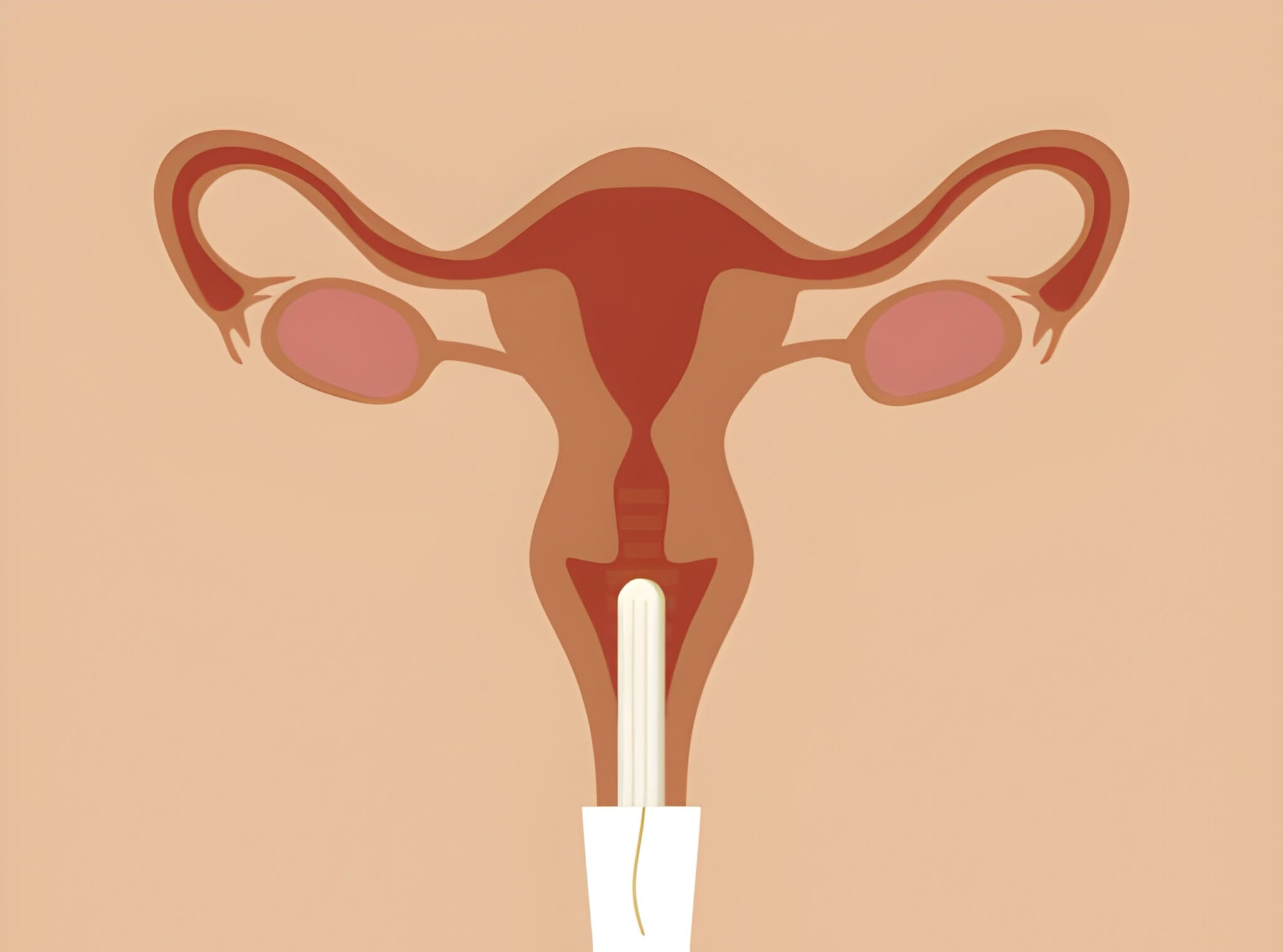Experiencing brown discharge after getting an IUD can feel confusing or even alarming — but in most cases, it’s completely normal. As a women’s health practitioner, I often see patients in Hartford who experience spotting or brown discharge after IUD insertion, whether they choose Mirena, Kyleena, Liletta, or a copper IUD. Let’s discuss why it happens, how long it can last, and when you should get checked.
Why Brown Discharge Happens After IUD Insertion
Brown discharge usually means that your body is shedding old blood. After IUD placement, your uterus adjusts to having a new device inside. The insertion can slightly irritate the uterine lining, leading to light bleeding or spotting that turns brown as it oxidizes.
Hormonal IUDs like Mirena can also cause temporary changes in your menstrual cycle. You may see brown spotting or light discharge as your body adapts to new hormone levels.
How Long Does Bleeding Last After IUD Insertion?
Light bleeding or spotting can last for a few days up to several weeks after the procedure. It’s more common for mild spotting to continue intermittently for the first 3–6 months as your uterus adjusts.
Here’s a general guide:
-
First week: Light bleeding or brown discharge is common.
-
1–3 months: Irregular bleeding patterns may appear.
-
3–6 months: Your cycle begins to regulate.
-
After 6 months: Most users have lighter, shorter, or no periods, especially with hormonal IUDs.
If you experience heavy bleeding that soaks through a pad every hour, contact your provider immediately.
Brown Discharge With IUD After 2 Years — Is It Normal?
Brown discharge years after IUD placement can still be normal, depending on timing and other symptoms. For example, brown discharge with an IUD after 2 years may occur due to:
-
Hormonal fluctuations
-
Ovulation spotting
-
Small shifts in your uterine lining
-
Delayed shedding of endometrial tissue
However, if the discharge has a foul odor or comes with cramping or discomfort, it may signal infection or IUD displacement. Always have it checked if something feels off.
Brown Discharge After IUD Insertion vs. Mirena Brown Spotting
With Mirena, brown spotting is particularly common during the first few months. Mirena releases levonorgestrel, a hormone that thins the uterine lining. This causes irregular shedding before your cycle stabilizes.
Over time, most women experience lighter periods — some even stop having them altogether. However, during adjustment, you may see:
-
Brown or pink discharge between cycles
-
Occasional light cramps
-
Short episodes of spotting after intercourse
If you notice persistent discharge beyond six months or new symptoms after long-term use, schedule a follow-up exam.
How Long Can You Bleed After IUD Insertion?
Bleeding duration depends on the type of IUD:
-
Hormonal IUDs (Mirena, Kyleena, Liletta, Skyla): Spotting may continue up to 3–6 months.
-
Copper IUD (Paragard): Some users experience heavier periods or longer bleeding for the first few cycles.
For copper IUD users, mild brown discharge can last longer as your uterus adjusts to the non-hormonal device. However, the discharge should gradually lessen over time.
Brown Spotting With IUD: When to Worry
Although light spotting is normal, seek medical advice if you notice:
-
Foul-smelling discharge
-
Fever or chills
-
Sharp pelvic pain
-
Irregular bleeding after months of stability
-
Changes in IUD string length
These signs could suggest an infection, a dislodged IUD, or endometrial irritation that needs evaluation.
Managing Brown Discharge After IUD Placement
Here are a few ways to stay comfortable while your body adjusts:
-
Use pads or period underwear instead of tampons for the first few days after insertion.
-
Keep track of your spotting pattern in a period tracking app.
-
Stay hydrated — it helps regulate hormones and tissue recovery.
-
Avoid douching, as it can disrupt vaginal balance.
-
Schedule a follow-up visit around six weeks after insertion to confirm IUD position.
How Long Do You Bleed After Copper IUD Insertion?
Copper IUDs don’t release hormones, so your uterus reacts differently. After insertion, you might notice:
-
Heavier bleeding for the first 2–3 periods
-
Brown discharge between cycles
-
Mild cramps or spotting after intercourse
Most of these symptoms improve within a few months as your body adjusts. If heavy bleeding continues for more than six months, your provider may evaluate for anemia or recommend switching to a hormonal IUD.
Why Is My Discharge Brown Instead of Red?
Brown discharge simply means old blood that’s been exposed to oxygen before exiting your body. It’s a normal phase of healing or cycle regulation — especially after an IUD insertion.
In contrast, bright red bleeding indicates fresh blood, which is more common immediately after placement or during your period.
What If You Experience Brown Discharge With Cramping?
Mild cramping with brown discharge is expected for the first few days or weeks. However, severe cramps or sharp pain may indicate that the IUD has shifted. If pain worsens or persists, contact your provider.
When to Contact Your Provider
You should schedule an appointment if you experience:
-
Persistent brown discharge beyond 6 months
-
Strong odor or yellow-green tint in discharge
-
Severe pain or fever
-
Missed periods with pregnancy symptoms
-
IUD strings that feel shorter, longer, or missing
These signs can indicate infection, IUD displacement, or rare complications.
Frequently Asked Questions
Is brown discharge normal after IUD insertion?
Yes, it’s common for a few days or even weeks after insertion as your body adjusts.
How long do you bleed after copper IUD insertion?
You may have heavier periods for up to 3–6 months, but symptoms usually improve.
What does brown spotting with an IUD mean?
It’s typically old blood leaving the body. However, if it’s persistent or foul-smelling, get checked.
Is brown discharge with an IUD after 2 years normal?
It can be, but if it’s new, accompanied by odor or cramps, it’s best to have an exam.
How long can you bleed after an IUD insertion?
Bleeding can last from a few days to several weeks, depending on your body and IUD type.
Final Thoughts from Dr. Meghan Killilea Galli, APRN, FNP-BC
Brown discharge after IUD insertion is a normal part of the healing process. Most cases resolve naturally within weeks or months as your body adjusts. Staying observant of your symptoms helps you spot anything unusual early.
If you live in Hartford, Connecticut, and have ongoing discharge, discomfort, or questions about your IUD, schedule a local consultation. A quick follow-up visit can confirm that everything is healthy and in place.
Disclaimer: This is informational content, not a substitute for professional medical advice.
“Check women’s health resources for Hartford residents in Hartford Health.”

Meghan Killilea Galli, APRN, FNP-BC, is a Connecticut-based board-certified Family Nurse Practitioner with over 5 years of experience in urology, women’s pelvic health, and primary care. She practices with Hartford HealthCare and Griffin Faculty Practice Plan and founded Health Gardeners to share reliable, evidence-based health information.
Read More
